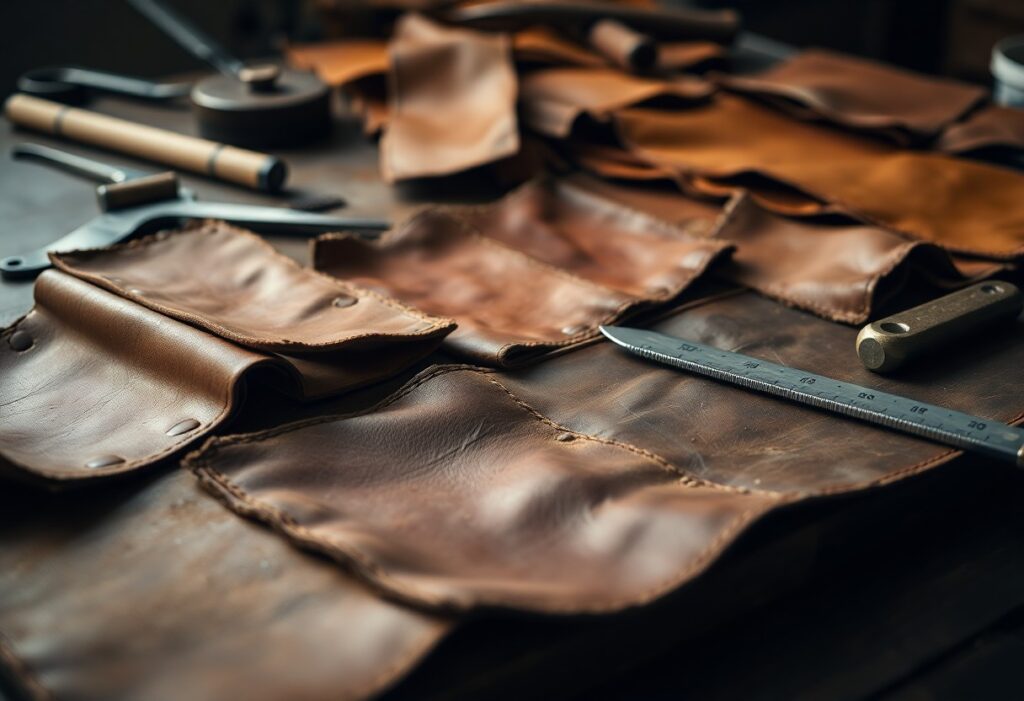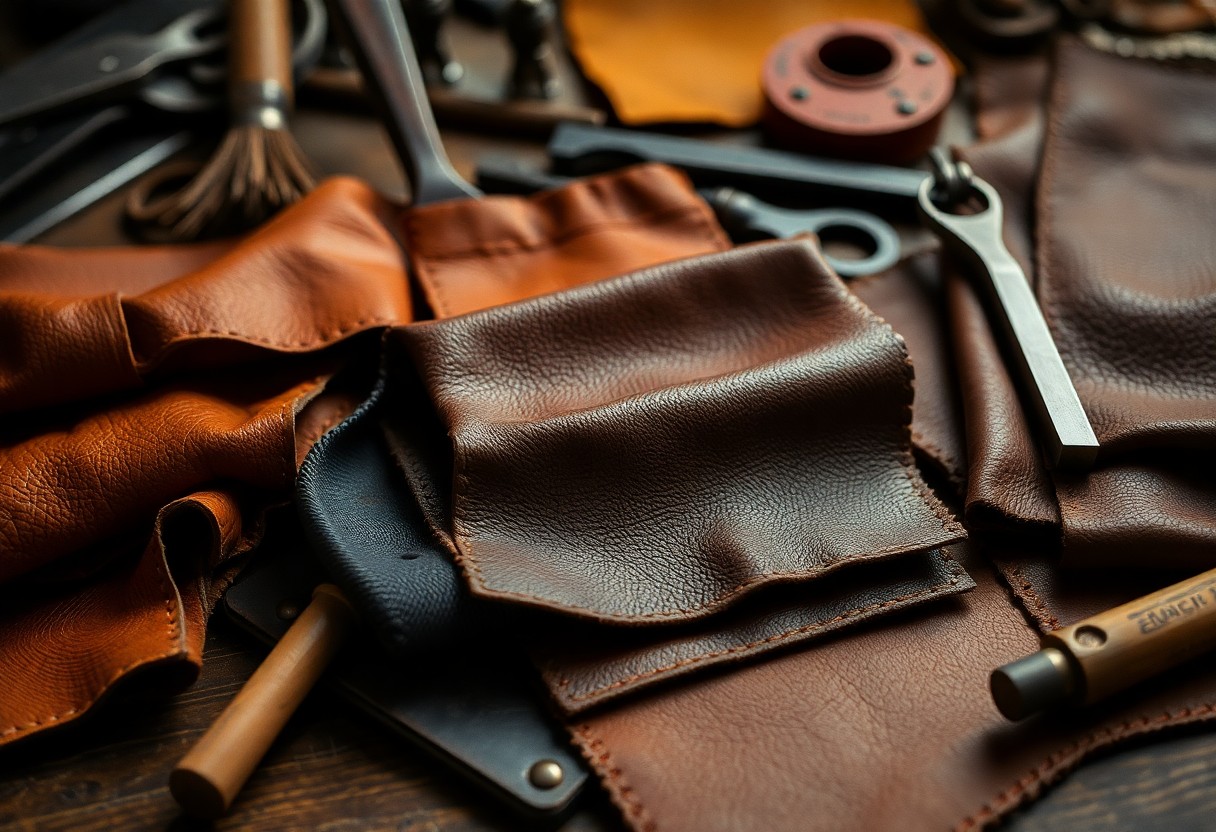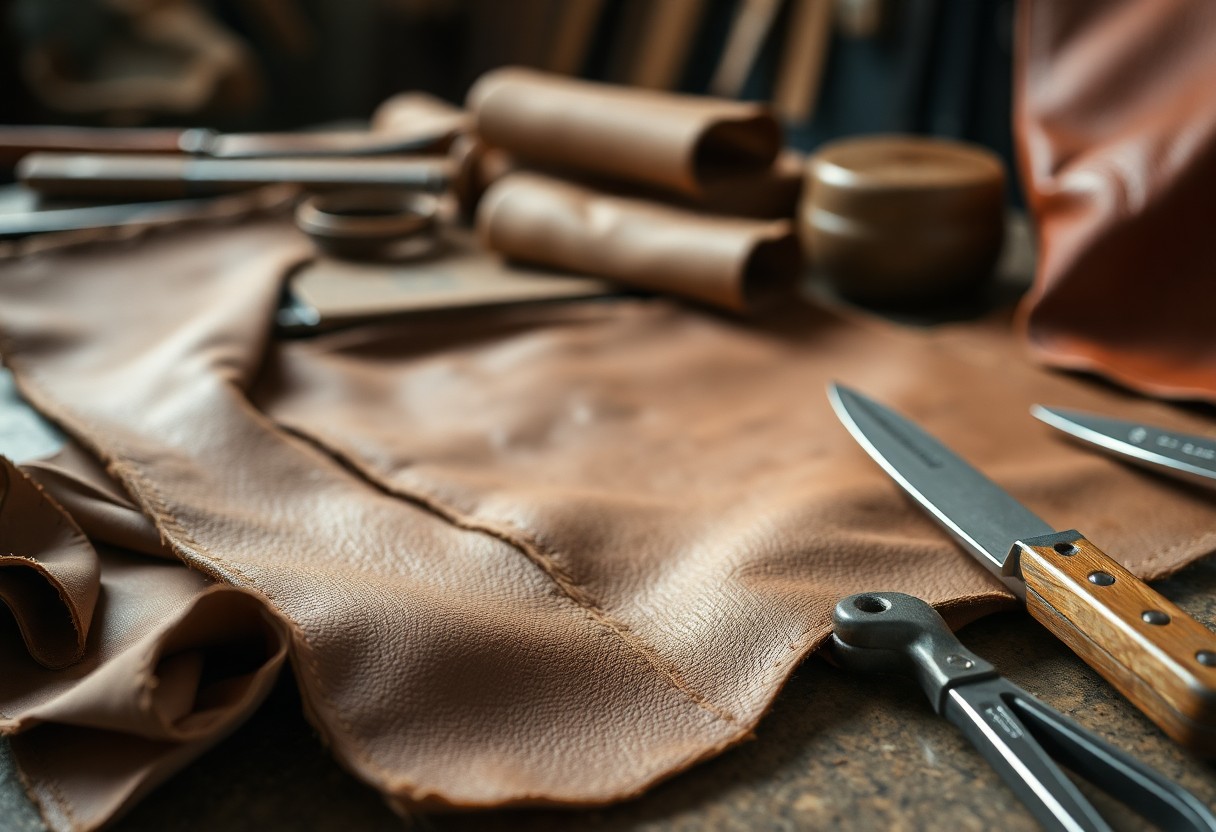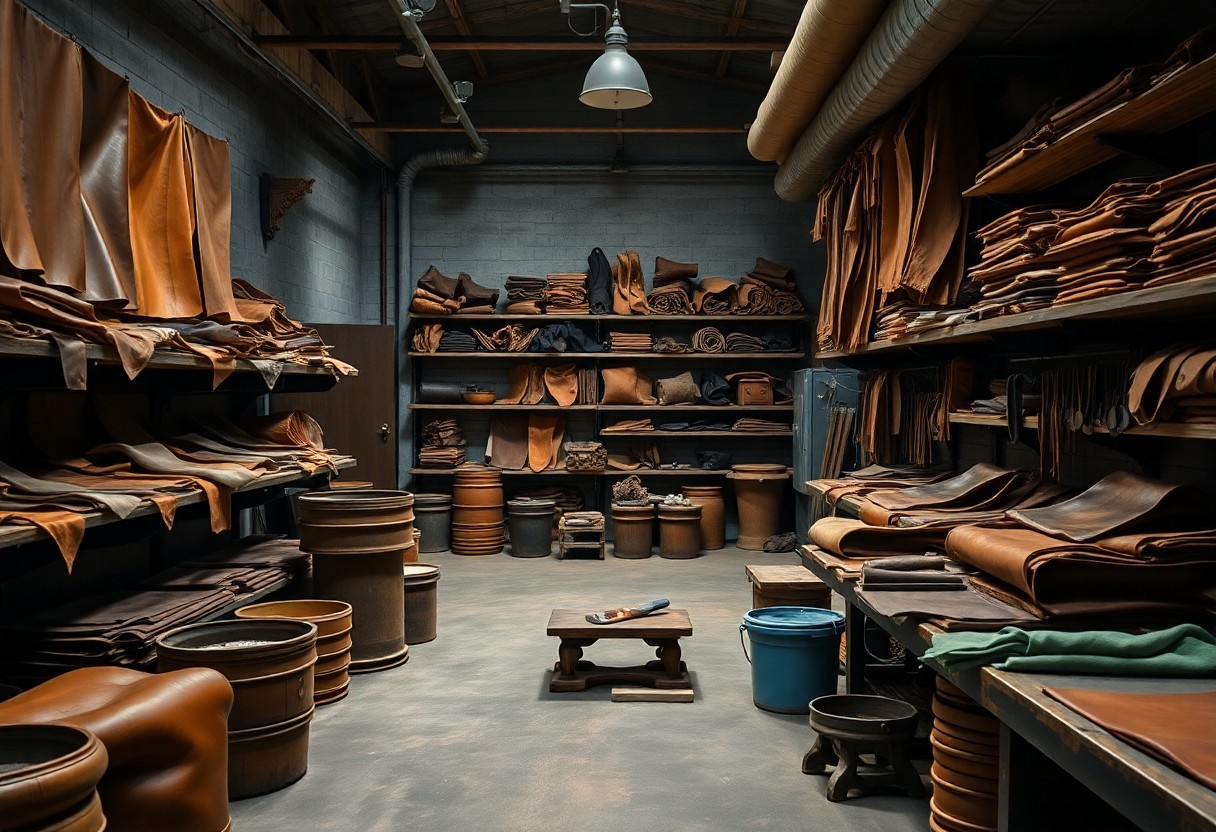
The craft of leather tanning has evolved significantly, becoming a complex and refined art that greatly impacts the quality of your leather products. Each tanning technique yields distinct characteristics in leather, influencing its durability, water resistance, texture, and color stability. The tanning journey starts with raw hides and moves through essential stages, including chrome tanning, vegetable tanning, and chrome-free methods. Each method imparts unique properties to the leather, which in turn affects its usability and maintenance requirements. By comprehensively understanding these processes, you can make well-informed choices regarding leather quality while also considering the environmental implications, as some techniques are significantly more sustainable than others.
Explore the Varied Techniques of Leather Tanning for Quality Results
Producing premium leather necessitates an understanding of the various tanning methods that convert raw hides into usable leather products. The main techniques include chrome tanning, vegetable tanning, and chrome-free tanning. This extensive guide is designed to provide you with a thorough understanding of the intricacies of each process, empowering you to select the method that best matches your specific leather needs.
| Method | Characteristics |
| Chrome Tanning | Fast processing, water-resistant, 85% of global production |
| Vegetable Tanning | Natural, eco-friendly, 10% of production |
| Chrome-free Tanning | Environmentally safe, 5% of production |
| Combination Tanning | Blends multiple methods for unique properties |
| Aldehyde Tanning | Specialized process tailored for specific applications |
Deep Dive into the Chrome Tanning Technique and Its Benefits
The chrome tanning method employs chromium (III) salts to produce leather that is soft, flexible, and highly sought after for various applications. This technique creates leather that boasts not only water resistance but also a remarkable affinity for dyes, making it a favored option within the leather industry. Chrome tanning is notably efficient, often completing the process in as little as 24-48 hours, which is vital for meeting the high demands of mass production.
Uncover the Timeless Craft of Vegetable Tanning
Considered one of the oldest methods, vegetable tanning utilizes natural tannins sourced from tree bark and leaves. This approach is highly prized for its ability to create leather that ages beautifully, developing a rich patina over time while remaining biodegradable. Different variations of vegetable tanning, such as those using extracts from oak bark, chestnut, and mimosa, contribute to the unique characteristics of the final product. This labor-intensive method typically spans around 4-6 weeks, yielding leather that is generally firmer and more structured than chrome-tanned alternatives.

Comprehensive Breakdown of the Leather Tanning Stages for Quality Assurance
The journey of transforming raw hides into premium finished leather involves a systematic and methodical process. Below is a detailed examination of each critical step and its significance in achieving the highest quality leather.
Essential Pre-tanning Procedures to Ensure Superior Leather Quality
To achieve the highest quality leather, raw hides must undergo a series of meticulous preparation steps. This initial stage involves soaking the hides in clean water for 24-48 hours to eliminate salt and dirt, followed by a liming process that effectively removes hair and fats. Maintaining precise pH control during this crucial phase is vital to prevent any damage to the hides and ensure a successful tanning outcome.
Important Steps in the Primary Tanning Phase for Optimal Results
The pretanning phase begins with deliming and pickling to prepare the hides for the primary tanning agents. The most widely adopted method is chrome tanning, which involves using chromium sulfate and can produce leather in as quickly as 24 hours. In contrast, vegetable tanning employs natural tannins, extending the process to approximately 20-60 days.
Temperature control plays a critical role in the tanning process. Chrome tanning typically occurs at temperatures between 35-40°C, while vegetable tanning is carried out at lower temperatures ranging from 20-25°C. Consistent monitoring of pH levels is essential to avoid damaging the leather and ensure optimal absorption of tanning agents, which is crucial for achieving the desired quality and characteristics of the finished product.
Advanced Leather Treatment Techniques to Elevate Quality
A range of techniques exists to enhance the properties of your leather. From surface finishing to deep penetration treatments, each method serves a distinct purpose. With the right treatment, you can extend your leather’s lifespan by as much as 50% while significantly improving its resistance to water, heat, and wear, thereby preserving its integrity for many years.
Exploring Various Surface Treatment Options for Enhanced Durability
Surface treatments applied to leather may include waxing, buffing, and protective coatings. These techniques can enhance water resistance by up to 70% and allow for a choice between shiny or matte finishes to fit your aesthetic preferences. Furthermore, surface treatments are essential in safeguarding leather against UV damage and the rigors of daily use, ensuring that your leather products remain in pristine condition.
Understanding Dyeing Techniques to Improve Color and Longevity
Your leather can absorb different types of dyes at varying depths, depending on the dyeing method selected. For example, aniline dyeing penetrates deeply into the leather, while surface dyeing allows for a more controlled color application. The dyeing method you select will directly affect both the appearance and long-term durability of the leather, influencing how well it ages over time.
Moreover, the dyeing technique chosen has a significant impact on the final characteristics of the leather. Drum dyeing can achieve up to 95% color penetration, while spray dyeing offers enhanced precision for color control. It is important to note that natural dyes are generally more eco-friendly but may fade approximately 20% faster than their chemical counterparts, making the choice between dye types an important consideration for those mindful of their environmental footprint.

Understanding the Key Determinants of Leather Quality During Processing
The quality of leather is influenced by numerous interconnected factors throughout the processing journey. Recognizing these elements is crucial for achieving superior results in both leather selection and care. The tanning method, quality of the hides, and processing parameters all play vital roles in determining the final attributes of the leather. By mastering these factors, you will be better positioned to assess leather quality according to your specific requirements and preferences.
Choosing Raw Materials for Exceptional Leather Quality
When selecting raw materials, it is essential to consider the condition of the hides and the source of the animals. The quality of your raw materials directly affects the characteristics of the final leather product. The best hides typically come from healthy animals and exhibit minimal surface imperfections. Look for consistent thickness and the absence of parasitic damage. Selecting materials based on their intended application is crucial, as different uses demand specific hide qualities to ensure optimal performance and durability.
The Importance of Processing Parameters in Quality Assurance
There is a direct relationship between processing controls and the overall quality of leather. Maintaining precise oversight of pH levels, temperature, and chemical concentrations is vital for achieving optimal results. The duration of tanning typically lasts from 24 to 48 hours, with temperature controls kept between 35-40°C. Careful attention to these parameters ensures a consistent quality of leather throughout the entire processing phase.
This meticulous level of oversight must extend to every processing stage. Regular monitoring of moisture content (ideally between 45-55%), maintaining appropriate drum speed during tanning, and ensuring accurate chemical dosing are all crucial. Furthermore, managing the drying conditions is vital to prevent any damage to the leather. A thorough focus on these elements ultimately leads to the production of higher-quality finished leather.
Expert Insights for Optimal Leather Treatment Outcomes
Not all leather treatment processes yield the same quality levels. It is essential to focus on temperature control, chemical balance, and timing precision throughout the tanning process to achieve the best possible results.
- Consistently monitor pH levels
- Maintain a stable temperature
- Follow exact chemical ratios
- Document each step meticulously
Being aware of the signs of proper tanning can help you achieve high-quality finished leather that meets your expectations and standards.
Strategies for Process Optimization in Leather Tanning
To achieve the best results, controlling your tanning environment is crucial. Maintain your workspace at temperatures of 20-25°C and keep humidity levels between 45-55% to ensure optimal conditions. Ensure that your chemical solutions are fresh and accurately measured. Regular maintenance of your equipment is vital for achieving consistent results throughout the tanning process.
Upholding Quality Standards in Leather Maintenance and Care
The quality of leather is significantly influenced by your storage conditions and handling practices. Store your leather in a dry, cool area away from direct sunlight to maintain its integrity and prevent deterioration. Regularly check the moisture content and rotate your stock every 30 days to sustain optimal conditions.
Monitoring the tanning process is essential for maintaining quality standards. Your routine checks should include pH testing, physical inspections, and moisture content analysis. Document all findings and make necessary adjustments to your procedures based on the results. Consistent quality control enables you to identify potential issues before they adversely affect your final product, ensuring high standards are upheld throughout the leather processing journey.

In-Depth Comparative Analysis of Leather Tanning Techniques
To gain a more profound understanding of leather tanning, it is essential to analyze the various methods based on their unique advantages and drawbacks. Below is a comprehensive comparison of the primary tanning techniques:
| Pros | Cons |
|---|---|
| Chrome tanning: Fast processing, cost-effective | Chrome tanning: Environmental concerns, potential disposal challenges |
| Vegetable tanning: Eco-friendly, natural process | Vegetable tanning: Time-intensive, requires higher water usage |
| Chrome-free tanning: Environmentally safe, good quality | Chrome-free tanning: Complex process, higher costs |
| Combination tanning: Offers versatile properties | Combination tanning: Challenging to maintain quality control |
Economic Factors Influencing Leather Tanning Decisions
Your choices regarding leather tanning methods can significantly influence production costs. Chrome tanning boasts 85% cost efficiency compared to vegetable tanning, while chrome-free methods often raise expenses by 20-30%. Understanding these economic implications is essential for effective budgeting and planning within the leather production sector.
Impact of Tanning Methods on Leather Quality and Characteristics
The quality of even the finest leather can be severely affected by poor tanning choices. The tanning method you select directly influences critical attributes such as durability, water resistance, and texture, which are essential for the overall performance of the leather.
For example, leather processed through chrome tanning displays superior water resistance and flexibility, making it suitable for various applications, while leather treated using vegetable methods tends to showcase better aging characteristics that develop a unique patina over time, thereby enhancing its aesthetic appeal and value.
Essential Insights on Leather Tanning and Treatment Techniques
The information presented highlights that various leather tanning and treatment methods significantly impact the quality and characteristics of your leather. The decision between chrome, chrome-free, or vegetable tanning will greatly influence your leather’s durability, texture, and environmental considerations. Additionally, the dyeing technique you choose—be it aniline or crust—will affect your leather’s color richness and aging process. Lastly, the type of finishing applied—whether full grain, corrected grain, or top-coated—determines the standards for appearance, breathability, and maintenance requirements. Having a comprehensive understanding of these processes enables you to make informed decisions regarding your leather purchases and care practices, ultimately ensuring satisfaction and longevity.
Your Leather Tanning Questions Addressed: Comprehensive FAQs
Q: What are the primary distinctions between chrome tanning and vegetable tanning?
A: Chrome tanning employs chromium salts, resulting in soft, water-resistant leather that is processed quickly and economically, accounting for 85% of the global leather production. In contrast, vegetable tanning utilizes natural tannins derived from tree bark and leaves, requiring a longer processing time while producing leather that gains character with age. Although vegetable-tanned leather is more environmentally friendly in terms of disposal, it is more susceptible to staining compared to chrome-tanned options.
Q: How does aniline dyeing influence leather quality and appearance?
A: Aniline dyeing involves immersing leather in dye baths that deeply penetrate the material. This technique results in uniform color throughout the leather, ensuring excellent color retention. Nowadays, aniline-dyed leather is often dyed partially, rather than completely, maintaining a lighter middle layer. This method enhances the leather’s stability while providing good color depth on the surface, resulting in a more visually appealing final product.
Q: What differentiates full grain leather from corrected grain leather?
A: Full grain leather retains its natural surface without sanding or artificial overlays, showcasing natural pores, the strongest fiber structure, and the capacity for restoration when scuffed. Conversely, corrected grain leather undergoes sanding and is covered with a plastic layer. While corrected grain is easier to clean and maintain, it often lacks breathability and may crack over time without repair, making full grain leather a more desirable choice for quality-conscious consumers.
The Article Guide to leather tanning and treatment methods processes types and their impact on quality appeared first on My Shoes Finder
The Article Leather Tanning: Methods, Processes, and Quality Impact Guide Was Found On https://limitsofstrategy.com
The Article Leather Tanning Methods: Processes and Quality Impact Explained First Appeared ON
: https://ad4sc.com



Comments are closed